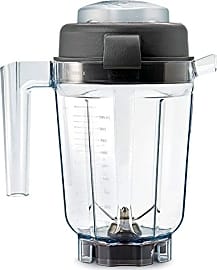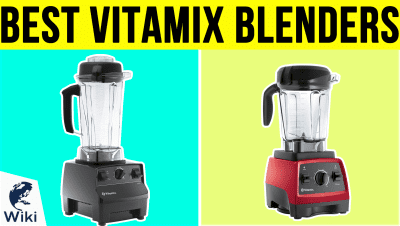The 10 Best Grain Mills

This wiki has been updated 42 times since it was first published in June of 2015. Whether you're an avid baker, an aspiring home brewer, or just wild about nutrient-dense cereals, smoothies and whole-grain creations, doing your own milling can step up your kitchen game from average to artisanal. With a turn of a crank or a push of a button, you can churn out custom blends of gluten-free flours, the makings of a hearty porridge, or any number of wholesome ingredients. When users buy our independently chosen editorial choices, we may earn commissions to help fund the Wiki.
Editor's Notes
March 31, 2021:
A grain mill is a mechanical device that will crush, grind, shear, or shred grain into meal and flour, producing a variety of textures from coarse to very fine. The mills in this ranking are suitable for family use and small businesses, and choosing the best one comes down to the versatility of their features and their method of grinding. In this update, we added several new options to the list to replace outdated or unavailable models.
Hand-operated mills obviously require a certain amount of physical effort and may put some users off, however, they are particularly beneficial in some circumstances, as they don't generate heat in the same way an electric model does, and therefore won't damage the nutrients in the flour. The Country Living is a fine example of a manual mill, and is made from aircraft-grade aluminum with an adjustable setting for flour fineness. Electric mills take the hard work out of the process and are good for grinding large batches. We added the CGoldenwall High-speed to the ranking as a versatile option that is available in a range of sizes from 300 grams up to 2,500 grams. The popular Mockmill Professional was switched for the newer Mockmill 200, which has an improved motor capable of processing up to 200 grams per minute. The Austrian-designed KoMo Mio was selected as a replacement for the discontinued KoMo PK 1. It also features a more powerful motor and is handmade from natural beechwood. The NutriMill Classic is notable for its large capacity and its ability to grind differently textured flour without becoming overly hot, making it a good choice for bakers of all types.
February 19, 2020:
First of all, if you're looking for a device to accommodate your medium-scale home brewing operation, check out the Northern Brewer Hullwrecker. It won't make flour but it will help you grind grain for your mash.
Of course, if you're looking to bake things, you'll need a significantly different tool. The Roots & Branches Deluxe as well as the Country Living will both suffice if you don't need to use them frequently, but if you plan cooking multiple loaves per week, it can be tiring and time-consuming to use a hand-crank machine.
Alternately, if you own the right piece of kitchen equipment, the Vitamix Dry Grains and KitchenAid KGM are worth a look. But if you don't already own the right Vitamix or KitchenAid appliance, those won't help.
But never fear, there are some excellent self-contained electric models available. Both the KoMo Magic and KoMo PK 1 are made to exacting quality standards, though they do cost somewhat of a premium, in part because they're imported from Austria. The NutriMill Classic and WonderMill Electric are both tried-and-true options, while the Mockmill Professional 200 is a bit pricey, but it's incredibly well known and promises to create ultra-fine flour with relative ease.
Special Honors
Schnitzer Manual Ideal for grinding small amounts of grain for cereals or nutritious drinks, this handheld stone mill uses two Naxos-basalt and Magnesite millstones and has a removable 12-ounce container. It includes optional clamps for securing it to your work surface. healthnutalternatives.com
Pleasant Hill Grain For business or commercial use, a much larger grain mill will be necessary. Pleasant Hill Grain offers a wide variety of hammer mills and stone burr mills in a range of sizes. Their Steel burr disc mills can even grind wet or oily materials, including peanuts. pleasanthillgrain.com
Making Sense of Mill Talk : Impact, Stone, and Steel Burrs
Although manual mills require a great deal of elbow grease, some users prefer the workout and enjoy the labor involved.
In order to choose the best grain mill, you need to consider how and why you'll want to use it. Some grain mills offer greater versatility of textures, for those who plan to use their mill to make both coarse and super fine flours, while others boast efficiency or durability.
To help you find the grain mill most suitable for whatever you aim to achieve, we've created a guide that provides perspective on how the designs and features available in different grain mill models correspond to your unique priorities.
Power Source:
Before we get into milling mechanisms, speed, and texture, you'll need to understand the broadest and most critical distinction between grain mill types: how they're powered. Grain mills can be either manual (hand-powered), electric, or convertible.
Manual grain mills have the rather obvious benefit of not requiring a power source, so they'll work in locations without power or during blackouts. For those who plan to mill when camping or doing other outdoor activities, a hand crank mill is a great option. Although manual mills require a great deal of elbow grease, some users prefer the workout and enjoy the labor involved. Additionally, manual mills tend to be cheaper than electric mills for those who aren't prepared to make a big investment.
Electric mills will process grains much more quickly, and require much less labor from the user. For people planning to use their grain mill frequently, or for those who will be grinding large amounts of grain, an electric mill will be worth the investment. One drawback to electric mills is the noise—they'll usually be quite loud when running, so may not be ideal for people who live in apartments with sensitive neighbors. Depending on the model, electric mills might be more difficult to clean because they generally can't be completely disassembled the way that most manual mills can.
Convertible mills are manual mills with an optional motor attachment. For users who aren't sure how often they'll end up using their mill, convertible mills allow one to initially buy a manual mill and add the motor attachment later if they find themselves using it frequently. If you do choose a convertible mill, make sure that it works well as both a manual and electric mill, because some tout their convertibility but don't perform well in one mode.
Milling Mechanism:
The milling mechanism describes what inside of the mill actually grinds the grains. The two primary types are impact mills and burr mills, and of the latter, there is a further distinction between stone and steel burrs.
Impact mills are also known as micronizers, and use technology that has been derived from pharmaceutical micronizers, which pulverize substances into very fine powders. With impact mills, no literal grinding takes place. Instead, grain enters a chamber where a circular metal plate with concentric rings of steel teeth faces another spindle that spins at around 28,000 rpm. It spins so quickly that the grain's impact with the teeth causes the kernels to break into increasingly smaller particles. All impact mills are electric, and while they can often produce flours of ranging textures, they'll probably all be on the finer side. Impact mills will only function with dry materials, as materials that are particularly oily or fibrous will clog the mill. Additionally, this milling mechanism lends itself to raucousness, so don't expect your impact mill to be quiet.
Burr mills grind grain between two plates, one which is stationary while the other rotates from the power source. There are two types of burr mills: stone burr and steel burr, and they operate slightly differently. Stone burrs tend to stay cool, ensuring that the flour's enzymes—one of the primary nutritious benefits of using your own grain mill—stay intact. Stone burrs work by crushing the grain, and while they can't handle oily or moist materials, some models can handle fibrous substances such as dried herbs. While they can be more expensive, stone burrs are usually considered more durable, and will produce very fine flours suitable for making pastries and breads. Stone burr mills are available as both electric and manual options. In contrast to stone burrs, steel burrs are less expensive and can process a wider range of materials, including things like oily nuts and roots. For this reason, steel burrs are suitable for users who prioritize versatility over consistency, as flour made with steel burrs will typically need to be sifted before use.
Health Benefits of Milling Flour at Home
Whole grains—such as wheat berries—consists of three parts: the bran, germ, and endosperm.
The outermost layer is known as the bran, and it contains fiber, antioxidants, minerals, phytonutrients, and B vitamins that together prevent several diseases and improve the health of the digestive system.
The germ is innermost part of the kernel, and is rich with both B and E vitamins, phytonutrients, healthy fats, and proteins.
Lastly, the endosperm is the starchy middle layer, predominantly containing carbs and some protein.
Lastly, the endosperm is the starchy middle layer, predominantly containing carbs and some protein.
Unfortunately, commercially milled flour removes the bran and germ parts of the grain, instead using only the endosperm in the white all-purpose flour that you're probably buying at the store. This is because the oils produced by the bran and germ when the grain is milled quickly turn rancid, making it very difficult to commercially produce and sell a whole grain flour that possesses all of the health benefits.
Compared to refined grains, whole grains that include the bran and germ contain up to 80% more dietary fiber.
According to the Whole Grains Council, studies have shown that those eating at least three servings of whole grains daily have reduced their risk of stroke by 30-36%, reduced their risk of type 2 diabetes by 21-30%, reduced their risk of heart disease by 25-28%, and can better maintain their weight.
Additionally, whole grains have been associated with a reduction in the risk for both gastrointestinal cancers and hormone-related cancers.
Early Origins of the Grain Mill
The history of grain milling reaches back as early as 6,700 BCE, when, according to archaeological evidence, man first began grinding wheat grains into a meal using stone. Since this took place prior to the advent of baking, this wheat meal was probably used to make foods similar to porridge-type cereals.
At around 5500 BCE, man progressed into using millstones, or more specifically quern-stones to create flour.
The earliest form of quern-stones were saddle querns, which were elongated saddle-shaped stones (also referred to as bed-stones) that had been made concave through repetitive grinding motions with the handstone (also called a rubber-stone). Through back and forth parallel motions, the handstone would crush the grain against the saddle quern, eventually forming flour.
It was typically this type of mill that was powered by human slaves and animals.
Any bread made at this time would have been flat, unlike the breads we eat today that rise due to the use of yeast. By 3,000 BCE, the Egyptians had learned how to use leaven (old dough) as starters to create risen loaves of bread. They also used bread ovens.
The next major milestone for milling came somewhere between the fifth and third centuries BCE with the invention of the rotary mill or rotary quern. Generally, a rotary quern was comprised by two circular stones that would be pressed together and turned by hand to grind grain. In comparison to the saddle quern's small handstone, the rotary quern's handstone was much larger, and thus heavier, creating the needed pressure to crush and grind grain kernels.
Often, the lower stone would be convex while the upper stone would be concave, allowing the two pieces to fit into each other. In more advanced rotary querns, the upper stone had a handle that would be used to turn it, as well as a central hole where grain could be poured into the quern.
Romans advanced the technology used in rotary mills in the third century BCE by using animals or human slaves and water as power sources. In addition to the hand-powered rotary mill already described, the Romans also made use of a cone-shaped mill, comprised by an upper stone shaped like an hourglass and a lower stone that was conical. It was typically this type of mill that was powered by human slaves and animals.
Eventually, the Romans also developed a mill powered by water. You can read more about Roman watermills, specifically the Barbegal watermills, here. These watermills involved millstones driven by gears, thus allowing greater rotational speeds than in the animal powered models.















